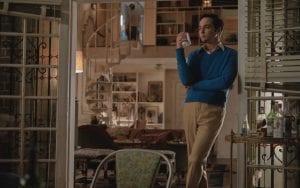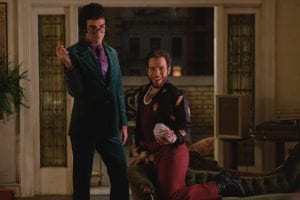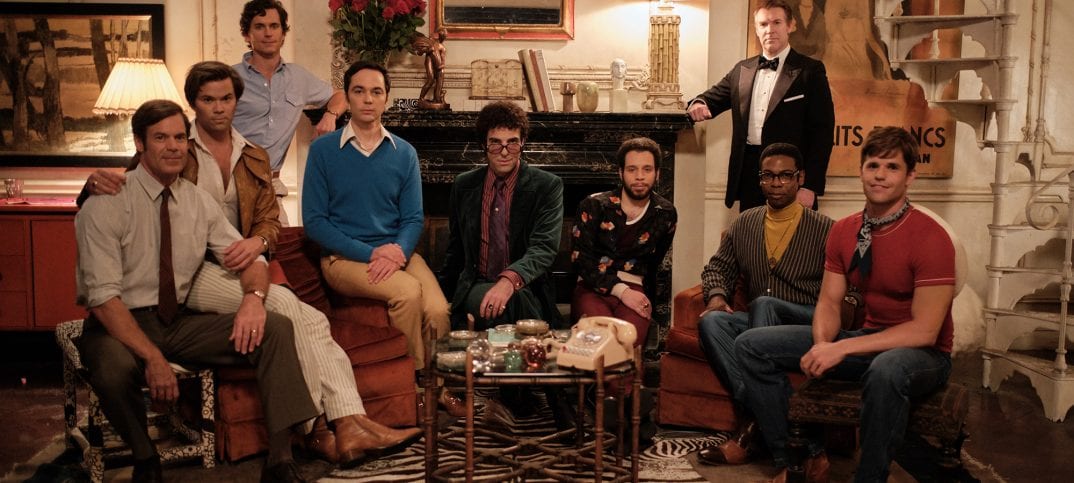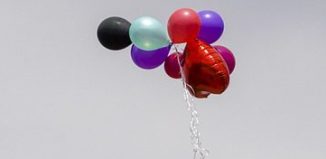Reviewed by Jeffrey Sanzel
In 1968, Mart Crowley’s The Boys in the Band premiered off-Broadway and, against all odds, ran for 1,001 performances. It was one of the first plays to deal with gay men not as ciphers, used symbols of deviance, or relegated to a comic sidekick stereotype. Instead, it is a portrait of fully realized, wholly human, and, in many cases, damaged individuals. It did not demonize homosexuality as “other,” but, at the same, it embraced its unique rising culture, one that had been forced to remain closeted. It is a dark play with great wit but a strong undercurrent of pain.
It was filmed in 1970 with members of the original cast, under the direction of William Friedkin. It was a fairly faithful adaptation and hewed, with one or two exceptions, very closely to the stage play.
The Boys in the Band centers around a birthday party for Harold, being thrown by his frenemy, Michael. The guests include Larry and Hank, a couple dealing with monogamy issues; Donald, Michael’s sometime boyfriend; Bernard, the most reserved of the group; and Emory, aggressive and aggressively flamboyant. In addition, “Cowboy,” a simple, good-looking hustler, has been engaged by Emory as a birthday present for Harold.

The dynamic shifts with the arrival of Michael’s college friend, Alan, a straight man, who is struggling with his marriage and possibly other issues. The evening builds to a game in which Michael, getting progressively drunker, shifts from distant warmth to pointed cruelty. He pressures the guests into calling the person whom they loved the most and confess their feelings. It is a harsh sequence, as Michael becomes more vicious. Harold says to Michael, “I’m turning on. You’re just turning.” And it is on this single word — “turning” — the story hinges. Michael’s turning from host to host-from-hell is what drives the latter part of the evening; in particular, his relentless bullying of his former roommate, Alan.
The plot is a simple one and derives its richness from the character development and the dimensional interactions. The first film was released in 1970, and it is clear the cast was able to transfer the raw depth that had developed from the stage onto the screen. The excellent documentary Making the Boys (2011) chronicles The Boys in the Band from inception to performance to filming and beyond.
In 2018, The Boys in the Band was given an all-star revival on Broadway. This production received the Tony Award for Best Revival of a Play, and has now been made into a film for Netflix, produced by Ryan Murphy.
The difficulty in bringing this piece back lies in the change in the world. Even between the original production and the release of the original film two years later, the Stonewall Riots altered the identity of the gay community. The rise of AIDS and its impact also was a major factor in how the piece was viewed beyond the late 60’s/early 70’s. To make it work in the twenty-first century requires the commitment to present it as a moment-in-time and not allow present-day commentary to skew the play’s head and heart.
Unfortunately, this Boys in the Band does not succeed in this. While a great deal of it feels like a shot-for-shot recreation of the source, the tone is decidedly off. It feels less like the gritty Manhattan of 1968 but rather a strange off-shoot of Sex in the City. Unlike in the original movie, where it is peeking into a private party, there is a stilted, presentational quality. Everything seems very pointed and show-me.
The lack of period is most detrimental with Alan (Brian Hutchison), who is meant to represent the era’s accepted and brutal point-of-view towards homosexuality. Hutchison struggles with this dichotomy but is unable to make it land.

Cr. Scott Everett White/NETFLIX ©2020
Jim Parsons, as Michael, has not found the contrast in the before and after — the sober, kinder Michael and the inebriated and destructive one. Michaels’ need to be contrary never seems fully realized because it lacks a shift. He gets drunker but not deeper. The result is a rehash of Parson’s most recent and more effective performance in the Netflix miniseries Hollywood. When the game final arrives, Parsons then begins to work too hard, and it almost seems like a revenge movie.
A few elements have been changed for political correctness of the 21st-century. There are also some very unnecessary flashbacks during the game that became a choice that just screams “look we’re making a movie.” With its gratuitous and clumsy flashes of nudity, it signals a mistrust of the material.
Bernard’s phone call, which is devastating in the original, here lacks teeth. This is no fault of Michael Benjamin Washington, who does his best to portray one of the revamped characters. But it lacks Bernard’s complete implosion. The same problem can be found with the outrageous Emory. Robin de Jesús gives a solid performance, but, by softening the character’s grating edge, it drains the fearlessness from his interactions.
Zachary Quinto’s Harold is strong and closely resembles Leonard Frey’s performance in the original. But, for some reason, it feels as if the character is more peripheral.
Matt Bomer is nicely understated as Donald, Michael’s boyfriend. Andrew Rannells comes off slightly sadistic as the more promiscuous of the couple, but manages to find some of the struggle towards the end. Tuc Watkins is both suitably uptight and gentle as his partner. Charlie Carver, as Cowboy, is likable if a bit less prominent than he should be.
Overall, there’s a lack of danger, like some strange game of dress-up, stylized rather than present. The stakes all seem very low which undermines the immediacy. An added coda — both unnecessary and pretentious — destroys the honest, raw simplicity of the ending. Ned Martel is billed as co-author with Crowley for the screenplay. Surprisingly, all these changes were sanctioned by Crowley (who passed away in March of 2020).
Much of the blame for this misfire must be placed on director Joe Mantello, whose lack of vision and failure to capture the essence of the story leaked into every moment and interfered with potentially strong performances.
The Boys in the Band is a powerful statement about the love-hate of self, of stereotypes, and of introspection. It is a raw snapshot of real people in a real time in history. It is sad that this will be the version that many will watch and wrongly judge Crowley’s source. We can only hope that they will do themselves the favor and seek out the original.
Rated R, The Boys in the Band is now streaming on Netflix.







